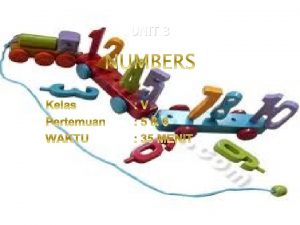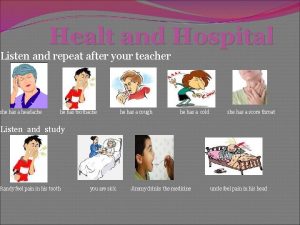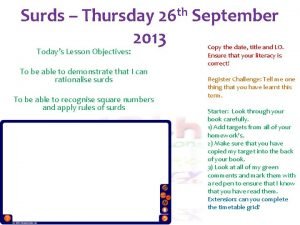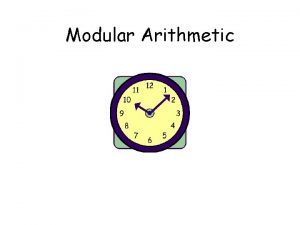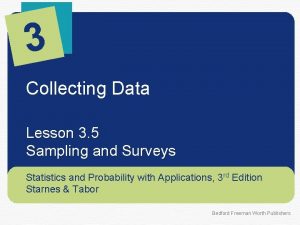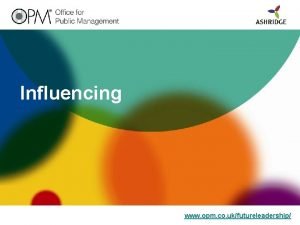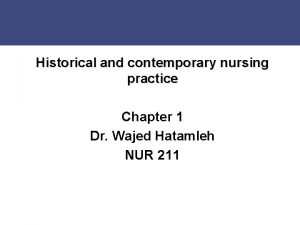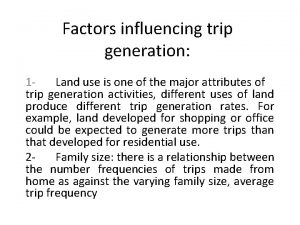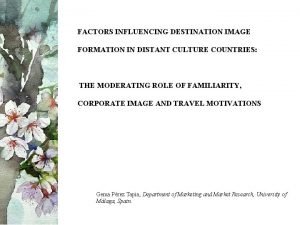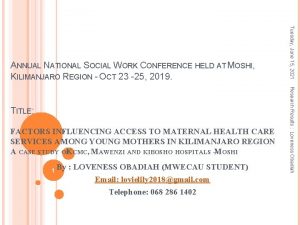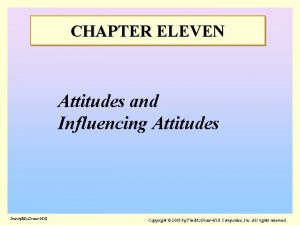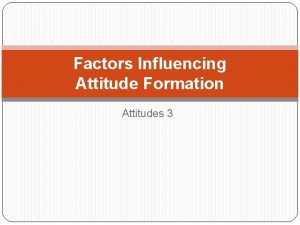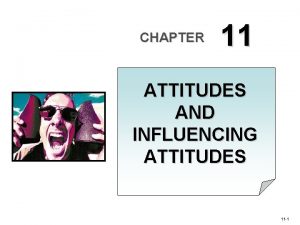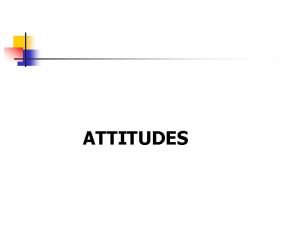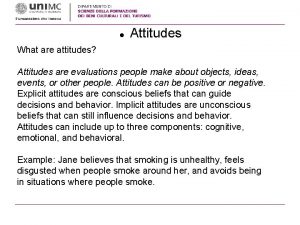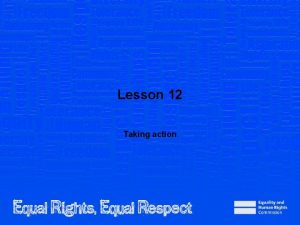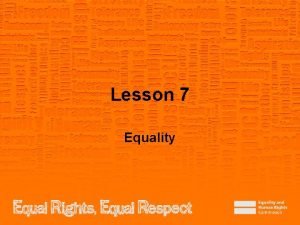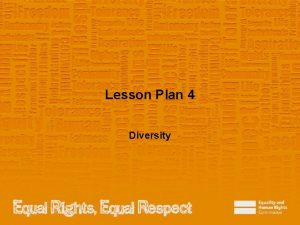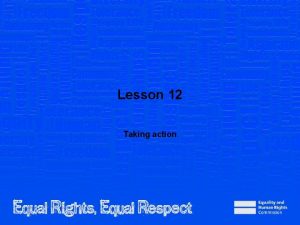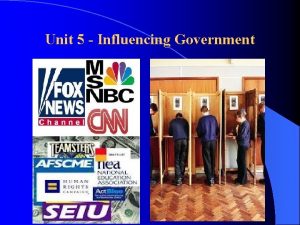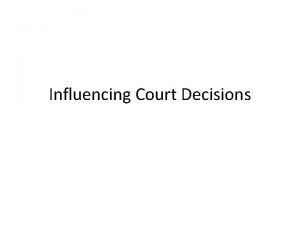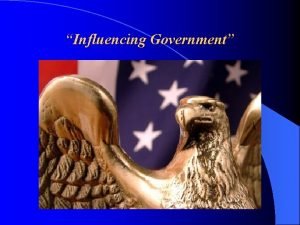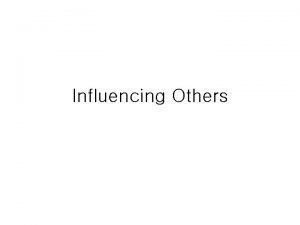Lesson 11 Influencing attitudes Note to teacher These































- Slides: 31

Lesson 11 Influencing attitudes

Note to teacher • These slides provide all the information you need to deliver the lesson. • However, you may choose to edit them and remove some of the detail to make them appropriate for your students. • To edit these slides, you should save them to your computer with a different file name.

The power of advertising • Play the Coke advert: http: //www. youtube. com/watch? v= df. U 17 ni. XOG 8

The power of advertising • This advert from the 1970 s was the catalyst for Coke going global and becoming the most popular soft drink ever! • If Pepsi had made a better advert first, they may have been the top seller. – Why do you think it influenced so many people? – How does advertising impact on our attitudes and choices? – So is advertising a good or bad thing?

Influencing attitudes • Many things can influence our attitudes; in good and bad ways. • We will be looking at how the media and other things can have a powerful influence on our attitudes. • We will also discuss why it’s important to make our own informed opinions, based on good understanding and fact. • Today’s learning outcomes: – Understand that our attitudes can be affected by external influences. – Be able to recognise how my attitudes and opinions are influenced.

Two minute challenge • In pairs, list as many things as you can that influence people to think or do something. • We will go around each pair, and no repetition is allowed. • Who will come up with the most?

Diamond 9 example 1 2 3 4 3 4 5

Diamond 9 discussion • Which influences your attitudes the most? • Do they influence your attitudes for good or bad? • How much do you decide based on your own attitudes and opinions?

Headliners • You will work in teams. • There are three rounds to the challenge. • In each round, you will read three different newspaper headlines. • You must detect the ‘real’ headline. The other two are made up. • Each time you answer correctly, you will get one point.

Headliners Round 1: t of u o ezed igners e u sq re o s f n o y Brit force b k wor Increase in foreign workers over past 5 years EU opens and foreign workers flock to Britain

Headliners Round 2: % of 7 6 w ho Stats s are black ts suspec me i r c n gu Black to blame or not? Black men ' to blame for most violent city crime’!

Headliners Round 3: ! Tee irls g e g a n rol’ t n o c ut of o ‘ e r a A survey re veals that g irls overtak boys in teen e age drinkin g Girls – Britain’s next generation of drinkers!

Headliners Headline 1 - Real headline: Britons squeezed out of workforce by foreigners

Headliners Headline 2 - Real headline: Black men ‘to blame for most violent city crime’!

Headliners Headline 3 - Real headline: Teenage girls are ‘out of control’!

Headliners • How would these hyped headlines affect readers’ views? • What kind of thoughts and feelings do they create compared to the real headlines? • What kinds of attitudes and behaviour can they lead to? • What stereotypes could they create? • What problems and behaviour could this create in wider society?

Headline writers • In pairs, review the scenario in the worksheet or the video. • Create two headlines: 1. Sensationalised headline – exaggerate some things and try to create a negative headline about a group of people. 2. Factual headline – base this one on facts, and try to provide a balanced view.

Fact or fiction? Human rights laws stop people from taking photos in public parks. Daily Mail – August 2010 F n o i t ic

Fact: • There is nothing in human rights law that prevents someone taking photographs of flowers in a public place for their own use. • If the photographer intended to use the photographs commercially then they might need the permission of the parks owners, but that has nothing to do with human rights law - rather to do with commercial interests. • A person’s right to respect for private and family life might only apply if a photographer was intrusive in taking photographs of an individual without their consent e. g. Chasing a celebrity to get a picture of their child.

Fact or fiction? Human Rights Act gives students a right to junk food. Daily Mail (Scotland) F n o i t ic

Fact: • This myth comes from the school initiative to promote healthy eating by preventing the students from leaving the property at lunch times. • The news report suggested that the Human Rights Act will cause the initiative to fail, as forcing them to eat health food or denying them junk food is against their rights. • Schools have a legal responsibility for their pupils during school hours. This means that they are allowed to make students stay on school premises. • The school would only be breaching human rights if they locked pupils in the school or physically forced them to eat.

Fact or fiction? The Human Rights Act means that terrorists can stay in Britain. Telegraph – May, 2010 F n o i t ic

Fact: • Human rights do protect all individuals from torture, and if the Government knows that individuals may face torture or death in their own home countries, they have an obligation to protect them. • However, the same decision would have been reached regardless of whether the Human Rights Act existed. • The UK has signed up to numerous international treaties including the European Convention on Human Rights, the Convention Against Torture and the Universal Declaration on Human Rights – all of which make it clear that the Government should not allow people to be deported to face torture.

Fact or fiction? “Finger-nickin’ good. Police gave the suspected car thief a meal because of his Human Rights” The Sun 7 June 2006 F n o i t ic

Fact: • The Human Rights Act does not give any prisoner making a rooftop (or any other) protest the right to the meal of his / her choice. • The police responded to his food demands in this case as part of their negotiating strategy.

What’s the impact? • How do these incorrect headlines affect attitudes? • What is the danger of reporting inaccurate news? • Why do you think newspapers report information inaccurately? • So, can you believe everything you read?

FACT! • The newspaper headlines highlight how reports aren't always based on facts - so they aren’t always accurate! • That’s why it’s important to challenge what you hear and what you read, and to try to find out the facts. • Once you know the facts, you can form your own opinions and be more confident in your views.

Rumours. . . • Are rumours and gossip based on fact or are they exaggerated? • What can be the impact of rumours on our attitudes and opinions?

Rumours. . . • Rumours are often exaggerated or they can be completely made up stories. • Rumours can have a very negative impact on our attitudes and can lead to things like arguments and bullying. • It is important to make sure that when you are talking about things or people, your views are based on facts and good understanding. • When people tell you things, it is important to question and challenge whether they are true and to find out the facts so you can make your own opinions.

Making your own opinions • What can you do to make your own opinions and be confident in your views? • You could follow this formula to form your own opinions and have confidence in your views? F – find out the facts A – ask questions C – challenge what you hear and read T – think about all the information and form your own opinions.

What have we learnt? ü That our attitudes can be affected by external influences. ü To be able to recognise how my attitudes and opinions are influenced.
 Difference between note making and note taking
Difference between note making and note taking Word signal
Word signal Difference between note making and note taking
Difference between note making and note taking Financial documents order
Financial documents order Debit note format
Debit note format Debit memo
Debit memo Note taking definition
Note taking definition Simple discount notes
Simple discount notes Spelling
Spelling Requirements for erf teacher 2
Requirements for erf teacher 2 Teacher good afternoon
Teacher good afternoon Repeat after your teacher
Repeat after your teacher Repeat after the teacher
Repeat after the teacher Listen and then repeat
Listen and then repeat What is ecological management
What is ecological management Trading hand signals
Trading hand signals Lesson note on the coming of the holy spirit
Lesson note on the coming of the holy spirit Lesson note on surds
Lesson note on surds Modulo arithmetic rules
Modulo arithmetic rules Lesson 3.5 what is wrong with these surveys
Lesson 3.5 what is wrong with these surveys What factors affect personality
What factors affect personality Oxidation weathering
Oxidation weathering What are the objectives of wages and salary administration
What are the objectives of wages and salary administration Physical factors influencing agriculture
Physical factors influencing agriculture Factors influencing projectile trajectory
Factors influencing projectile trajectory Push pull influencing
Push pull influencing Nightingale definition of nursing
Nightingale definition of nursing Factors influencing trip production
Factors influencing trip production Factors influencing international pricing
Factors influencing international pricing A model of destination image formation
A model of destination image formation What three factors influence communication choices
What three factors influence communication choices Factors influencing maternal health
Factors influencing maternal health











